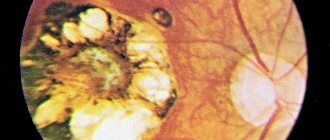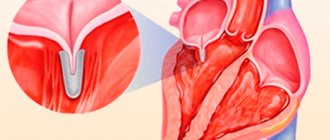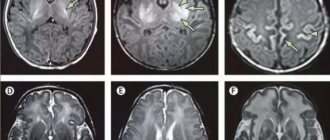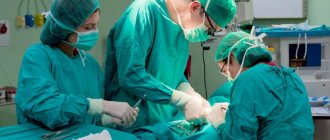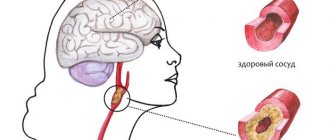Hypertension is a serious disease that leads to serious complications of the cardiovascular system. Since it often affects the working population, various classifications have been developed, including special scales for assessing cardiovascular risk. In this article we will tell you what hypertension is, stage 2, risk 3.
Classification
Hypertension has several classifications.
By degree:
- 1st degree - from 140 to 159 mm Hg. st SAD; 90-99 mm Hg. DBP;
- 2nd degree - from 160 to 179 mmHg. GARDEN; 100-109 mm Hg. DBP;
- Grade 3 - above 180 mm Hg. GARDEN; > 110 mmHg DBP.
To assess cardiovascular complications, abbreviated CVC, the SCORE scale has been developed:
- Low risk <1%.
- Moderate risk from 2 to 5%.
- High risk of 5 to 10%.
- Very high risk of more than 10%.
In a clinical situation, the doctor also assesses the stage of the disease:
- Stage 1 indicates that there is no target organ damage (TOD).
- Stage 2 - there is damage to one or two OMs.
- Stage 3 indicates that POM > 2 or associated clinical conditions are present, such as heart attack, stroke, transient ischemic attack.
Symptoms
Arterial hypertension has no specific symptoms; most often patients complain of:
- headache;
- dizziness;
- nausea;
- weakness;
- drowsiness;
- increased heart rate;
- extraneous noise in the ears;
- reduced performance.
However, most often the increase in pressure does not cause any symptoms and the patient finds out about arterial hypertension by chance. For example, during medical examinations or during medical examinations. In stages 2 and 3 of hypertension, the symptoms of the affected organs come to the fore.
| Target organs | Symptoms |
| Heart |
|
| Vessels |
|
| Kidneys |
|
| Retinal vessels |
|
| Brain |
|
Hypertensive crisis
Hypertensive crisis is an unpredictable complication of hypertension. It manifests itself as a rapid increase in blood pressure to high levels, often leading to cardiovascular disasters. Its symptoms:
- pain in the occipital region of the head
- numbness of fingers;
- panic and fear of death;
- pain in the heart area.
And also read on our website: Is it possible to do yoga with hypertension and what are the benefits, independent exercises to reduce blood pressure
A hypertensive crisis must always be stopped. Patients suffering from hypertension for a long time should be able to cope with it independently.
To do this, you should always have an emergency medicine in your home medicine cabinet, for example:
- Captopril;
- Nifedipine;
- Moxonidine;
- Furosemide.
If a hypertensive crisis is detected for the first time, call an ambulance. Call your doctor immediately if you experience any of the following complications:
- transient ischemic attack;
- stroke;
- acute coronary syndrome;
- preeclampsia and eclampsia in pregnant women.
A hypertensive crisis can lead to cardiovascular disaster. If you can’t stop it on your own, consult a doctor!
Diagnostics
Diagnosis of arterial hypertension includes several stages:
- Collection of complaints and medical history.
- Repeated blood pressure measurements at least 2 times during different visits to the doctor.
- Physical examination.
- Laboratory and instrumental examination.
At the first stage, the doctor will find out what symptoms are bothering you and how long ago they appeared. Find out whether you smoke, whether you drink alcohol and in what doses, and whether your relatives have cardiovascular diseases.
Keep a blood pressure diary for 10 days. To do this, it is necessary to measure blood pressure at least 3 times a day. Show your doctor your notes at your next appointment. He will analyze the results obtained and, based on this, decide on the tactics for further examination and treatment.
Physical examination includes auscultation of the heart, determination of its boundaries, and heart rate. The doctor will definitely check your pulse and its tension. Measure your waist circumference, weigh you, and determine your body mass index.
Laboratory diagnostics:
- general blood and urine analysis;
- level of proteinuria and microscopy of urinary sediment;
- biochemical blood test - sugar, ALT, AST, creatinine, K, Na ions, total cholesterol and lipid profile.
Instrumental diagnostics:
- ECG;
- ECG with stress;
- EchoCG;
- Ultrasound of the brachiocephalic arteries;
- Ultrasound of the kidneys;
- chest x-ray;
- Holter monitoring ECG;
- daily blood pressure monitoring;
- consultation with an ophthalmologist, endocrinologist.
Additional examinations that are not included in the standard may be required, for example, a hormonal mirror. In rare cases, hospitalization in a hospital may be required. This is necessary for a more accurate diagnosis. As a result of examinations, the doctor makes a diagnosis and prescribes treatment.
And also read on our website: Hypertension: diagnosis, differentiation from other diseases, methods of getting rid of the disease
Hypertension stage 2, risk 3 – what is it?
What does grade 2 hypertension, risk 3, mean? This question worries the majority of patients who, after visiting a consultation with a general practitioner, were given this diagnosis. It is necessary to understand that the classification of hypertension according to the specified category with the assignment of 2 degrees and the possible occurrence of a risk of complications 3, provides for the presence of a pathological condition of the human cardiovascular system in the patient, characterized by the stable presence of high blood pressure within 160 units of the tonometer reading. This refers to the upper division of the measuring device.
Such blood pressure is quite difficult to stabilize with the help of traditional medications and folk remedies, which are used in most cases when a person begins a hypertensive crisis. People with strong walls of blood vessels may not feel significant discomfort for a long time due to the fact that the pressure rises to 160 units and complain only of a severe headache. The latter symptom can be successfully relieved by taking tableted analgesics and antispasmodics. As the great vessels lose their elasticity, the signs of hypertension intensify and become more and more disturbing to the patient. Ultimately, all this ends in a severe hypertensive crisis with the patient’s hospitalization in the inpatient general therapy department.
Treatment
Five groups of drugs are used in the treatment of hypertension:
ACE inhibitors - Captoril, Lisinopril, Perindopril.- Angiotensin receptor antagonists - Valsartan, Irbesartan, Telmisartan.
- Diuretics - Indapamide, Veroshpiron, Hypochlorothiazide.
- Beta blockers - Bisoprolol, Nebivolol, Metoprolol.
- Slow calcium channel inhibitors - Diltiazem, Verapamil, Amlodipine.
These drugs are used as basic therapy for hypertension. They can be used both in monotherapy and in combination regimens. However, ACE inhibitors and antiotensin receptor antagonists, as well as beta blockers and slow calcium channel inhibitors cannot be combined!
Only a doctor, based on research results, prescribes this or that drug.
Traditional methods
Traditional medicine recipes are still used today. Before using them, consult your doctor to help you evaluate the benefits and risks.
Traditional recipes only complement the main treatment, without replacing it!
Red rowan
Red rowan has long been used as a blood pressure reducer. Eat 100-150 g of rowan berries daily for 2-3 weeks, then take a break for 1-2 months. If necessary, repeat the course of treatment.
Rosehip infusion
Take 150-200 g of dry rose hips, pour 450-500 ml of boiling water. Let it brew for 1-1.5 hours. Strain, consume 150-200 ml 3 times a day after meals for 1-2 months. A break of 3-4 months, after which the course is repeated.
Rosehip not only reduces blood pressure, but also strengthens the walls of small-caliber vessels, and also saturates the body with vitamin C, preventing capillary fragility.
Chamomile tea
Pour 100 g of chamomile flowers into 350-500 ml of boiling water. Leave for 30-40 minutes, then strain. Use 200-250 ml after meals 3-4 times a day for 1 month. Take a break for 2-3 months, after which the course is repeated.
Chamomile perfectly calms and increases the body's resistance to stress factors.
And also read on our website: What can cause hypertension in a person? The main causes of the disease
Causes of hypertension grade 2 risk 3
It is important to know!
STILL STRUGGLE WITH ARTERIAL HYPERTENSION INCORRECTLY? The first bioavailable drug with proven effectiveness Read more »
Doctors are of the opinion that the main risk group for morbidity is people who have reached the age of 50-55 years and have acquired natural wear and tear on the walls of blood vessels throughout their lives. They have ceased to fully cope with their function of transporting blood, their valves have lost their former elasticity and the person begins to suffer from hypertension of the indicated degree. In addition, there are other causative factors that lead to the development of arterial hypertension of degree 2 with a risk of 3, and some of them occur in patients of all age categories. The causes of this disease of the cardiovascular system are associated with the presence of the following conditions and concomitant diseases of the body:
1. Atherosclerosis of the arteries.
In a healthy state, the main blood vessels, which are the arteries, have natural elasticity. If there is an excessive load on their walls, they expand, and then, after eliminating the stress factors, they return to their original position. A person practically does not feel any discomfort and this is considered the norm. If for some reason the walls of the vascular tissue begin to collapse and undergo atherosclerotic changes, then the artery loses its ability to behave elastically and the slightest nervous or physical stress causes an increase in blood pressure.
2. Heredity.
Hypertension grade 2, risk 3, refers to a group of diseases that can affect a person’s blood vessels due to his genetic predisposition to the manifestation of this disease. If the father or mother suffered from high blood pressure, then the probability that the child will develop this disease is 85%. This is a very high indicator of the possible development of the disease and cannot be ignored. The hereditary form of hypertension of this degree is very difficult to treat, since the presence of high blood pressure in the body is due to a pre-formed genetic program.
3. Obesity.
In people who are overweight, the likelihood of developing stage 2 hypertension with a risk of stage 3 is several times higher than in a person of average build or excessively thin. The thing is that with obesity, fatty acids are released into the bloodstream, from which cholesterol plaques are formed. Essentially, these are fragments of fat cells, clustered into dense formations, which settle on the walls of blood vessels and complicate the passage of blood through the body. This leads to the development of hypertension.
4. Hormonal imbalance.
A stable background of male and female sex hormones, as well as other secretions produced by the glands of the endocrine system, ensures not only that a person has an excellent mood, but also normal blood pressure. If the patient suffers from pathologies of the thyroid, pancreas, or has diseases of the adrenal cortex, then an excess release or deficiency of hormone synthesis occurs, which leads to the gradual development of arterial hypertension of degree 2 with a risk of 3.
5. Bad habits.
The presence of bad habits in a patient such as alcohol abuse, smoking, taking drugs, also destroys blood vessels and is an essential prerequisite for the development of hypertension of the appropriate degree, when the upper pressure goes off scale to 160 units and above. The longer a person’s life is associated with these harmful habits, the greater the risk of developing this disease and the development of its complications.
6. Oncological formations.
We are talking about malignant formations that, under the influence of certain negative environmental factors, led to their growth inside the main vessel. Cancerous tumors most often appear in the arteries. As the foreign tumor develops, a natural blockage of stable blood flow occurs and, as a result, the patient begins to experience symptoms indicating the presence of arterial hypertension. After surgery and removal of the tumor body, signs of arterial hypertension completely disappear.
The manifestation of hypertension in a patient of stage 2 with a risk of 3 is greatly influenced by the diet and daily meals consumed. When fatty foods of animal origin predominate, as well as an excessive amount of table salt, this also negatively affects the health of the heart and blood vessels. If a person does not reconsider his gastronomic preferences, then after 5-7 years the first signs of hypertension begin to appear.
Prevention
Prevention of hypertension involves lifestyle modification. Its scheme includes:
Increasing physical activity
To maintain health, you need to walk at least 10,000 steps daily at a moderate pace. Or do aerobic exercise for 30-40 minutes 3-4 times a week. Contact a rehabilitation specialist or physiotherapist - they will help you choose a set of physical therapy exercises taking into account your clinical condition.
Diet
The menu for hypertension requires serious revision. Be sure to limit your salt intake to 5 g/day. This means that you will have to give up all industrially produced products: sausages, canned food, smoked meats, salted fish, various snacks, since salt is used as the main preservative in their production.
It is important to eat enough vegetables and fruits, at least 400-500 g per day. Avoid fatty meats and add fish to your diet twice a week.
Weight loss
It has been reliably proven that for every 10 kg of weight lost, the SBP level decreases by 5-10 mmHg.
Rejection of bad habits
You should definitely stop smoking tobacco and drinking alcohol.
Arterial hypertension 2 degrees: features of the course, causes of development and characteristic signs
Hypertension is a severe pathological condition of blood vessels and the heart, when elevated blood pressure cannot be stabilized with medications. Arterial hypertension of the 2nd degree - stable high blood pressure in the range of 160-180 mm Hg.
The risk of complications is high. The phenomenon is life-threatening and can lead to myocardial necrosis, heart attack, hemorrhagic stroke in case of serious damage to the vascular wall, inability of the tone to correspond to the level of blood supply.
Risk factors
There are 4 degrees of hypertension, taking into account possible complications that pose a threat to the health and life of patients. The stage is determined taking into account:
- age of patients;
- stress on the heart;
- lifestyle;
- hereditary history;
- the presence of characteristic signs, obesity, bad habits.
8
24/7
With arterial hypertension, the risk of stage 2 development in men who abuse alcohol (smoking) and neglect physical activity is 3 times higher than in women. The main factors for the development of type 2 hypertension:
- elderly age;
- left ventricular myocarditis;
- modification of the heart wall, brain against the background of constantly high blood pressure;
- myocardial hypertrophy;
- pathology of muscle tissue;
- circulatory disorders;
- tissue necrosis;
- proteinuria.
In case of arterial hypertension of the 2nd degree, the target organs are:
- eyes;
- kidneys;
- heart;
- vessels;
- brain.
Pressure indicators increase by 15-20%. Additional provoking factors:
- age - men over 55 years old, women over 65 years old;
- obesity;
- physical inactivity;
- passive lifestyle;
- smoking;
- high levels of cholesterol in the blood, above 6.5 mmol/l;
- the appearance of atherosclerotic plaques in small vessels;
- failure of the kidney filters;
- kidney dysfunction;
- violation of coronary circulation;
- sustained cardiac ischemia.
With stage 2 arterial hypertension, the risk of developing regressive changes in the heart is 2 times higher than at stage 1.
Provoking factors for stage 2 arterial hypertension are not absolute parameters. They only make it possible to assume the likelihood of possible complications developing.
It is no longer possible to change the diagnosis. However, timely treatment and adherence to preventive measures can minimize complications and progression of the underlying disease.
Types of pathology
Types of arterial hypertension:
- Renovascular. Provoking factors are vascular atherosclerosis, kidney tumors, vasculitis.
- Pulmonary essential hypertension is a rare phenomenon, but poses a health threat. The reason is slow blood flow, increased vascular resistance in the lungs.
- Labile arterial pathology is a form of hypertension in which blood pressure levels periodically normalize. The condition is not considered pathological.
- Malignant (at a blood pressure level of 220/130 mm Hg) - the optic disc swells, the fundus of the eye changes. Only timely detection guarantees a favorable outcome of therapy.
Hypertension can be benign or malignant with rapid progression of symptoms and development of complications in the nervous and cardiovascular systems.
8
24/7
Causes
Stage 2 hypertension is more often diagnosed in older people. With age, blood vessels lose their elasticity and atherosclerotic plaques form in them. The muscle tissue of the heart undergoes pathological changes. Main reasons:
- hereditary factor, when blood relatives suffered from high blood pressure;
- passive lifestyle;
- complicated course of pregnancy, changes in hormonal levels;
- frequent stress, psychosis;
- complication of primary mild form of hypertension;
- diseases of the urinary system;
- non-compliance with a balanced diet, consumption of foods high in cholesterol;
- development of a tumor of any origin;
- failure of the kidneys, slowing down the removal of excess fluid and salts from the body.
Patients with minor pressure surges on the tonometer do not always turn to doctors at an early stage. The discomfort is minor, the body gradually adapts and gets used to new stress. But constantly high levels of pressure suppress many vital systems. Sooner or later, pulmonary and cerebral edema, stroke, myocardial infarction, and hypertensive crisis may develop.
Symptoms
Manifestations of arterial hypertension of the 2nd degree disturb patients from their usual rhythm of life. At first, vague, not bright, periodic symptoms appear:
- swelling of the hands, eyelids, face;
- the appearance of a capillary network on the skin;
- weakness, weakness;
- throbbing pain in the back of the head, temples;
- darkening, flickering of spots, black dots before the eyes;
- redness of the eyes;
- decreased vision;
- dizziness;
- emotional overexcitation.
During diagnosis, thickening of the walls of the heart and left ventricle is observed. Patients develop problems with urination.
Diagnostics
Physical and instrumental examination methods help to identify stage 2 arterial hypertension. The following are taken into account:
- symptoms;
- patient's well-being;
- blood pressure indicators during 2-week monitoring - indicators are measured 2 times a day (morning, evening).
Physical examination methods:
- listening to the cavity of the lung and heart with a stethoscope;
- visual assessment of the skin;
- pressure measurements.
Instrumental methods:
- Ultrasound of the pancreas, liver, kidneys, endocrine glands to assess the condition of organs and identify possible complications;
- EchoCG for visual examination, determination of left ventricular hypertrophy, assessment of the level of cardiac decompensation;
- electrocardiogram to determine the electrical activity of the heart muscles;
- blood and urine tests;
- Doppler examination to detect renal artery stenosis.
Arterial hypertension of the 2nd degree quickly progresses in the case of narrowing of one of the vessels. It develops at lightning speed - renin aldosterone is activated as the body's response to pathology.
8
24/7
Treatment at different stages
First of all, it is important for patients:
- reconsider your lifestyle;
- limit intake of table salt (liquid);
- reduce the daily caloric content of foods in case of obesity;
- stop smoking;
- dose the work and rest schedule;
- take courses of physiotherapy, exercise therapy;
- regulate physical activity;
- walk more in the fresh air.
Treatment to reduce high blood pressure is medication. Main drugs:
- beta blockers (Atenolol, Metoprolol, Acebutolol, Oxprenolol, Timolol, Bisoprolol, Sotalol) affect the cardiovascular system, unload the heart, slow down the rate of muscle contraction;
- ARB inhibitors (Valsartan, Candesartan, Irbesartan, Eprosartan) suppress angiotensin receptors, regulate the condition of the myocardium and blood vessels;
- ACE - angiotensin-converting enzyme inhibitors (Fosinopril, Cilazapril, Enalapril, Captopril, Trandolapril, Lisinopril) relieve tension in the blood vessels, reduce the rate of production of the hormone that constricts them;
- Renin inhibitors have nephroprotective and cardioprotective effects and reduce renin activity in the blood.
- diuretics (Thiazide) accelerate the removal of excess fluid from the body;
- calcium channel blockers (Verapamil, Diltiazem, Lacidipine, Amlodipine, Nifedipine).
Special attention is paid to diet. Patients with stage 2 hypertension should avoid:
- fatty fish;
- meat;
- confectionery products;
- spicy and spicy dishes.
Must be included in diet
- dried fruits;
- nuts;
- garlic;
- milk and vegetable soups.
Folk herbs with diuretic properties will help with isolated, periodic surges in blood pressure:
- horsetail;
- valerian officinalis;
- swamp cudweed;
- motherwort;
- Potentilla gossamer;
- buckthorn bark;
- yarrow;
- pharmaceutical camomile.
Forecast
Stage 2 arterial hypertension is considered an incurable condition. The prognosis is favorable if patients:
- maintain blood pressure levels within normal limits;
- lead a healthy lifestyle;
- give up bad habits;
- follow a diet.
Otherwise, hypertension progresses quickly and leads to complications:
- myocardial necrosis;
- hemorrhagic stroke;
- decompensation of vascular insufficiency, heart failure.
Mortality is high in cardiovascular pathologies and persistently high blood pressure levels.
The prognosis is disappointing for patients who neglect the recommendations of doctors, do not control blood pressure readings, and ignore complications. In case of heart failure or stroke, the probability of sudden death is 70%.
In stage 2 arterial hypertension, the risk of stage 3 development is high with severe damage to target organs. At stage 2 arterial hypertension, the risk of stage 4 development is 45-60%.
Prevention
Avoiding the development of arterial hypertension from stage 2 to stage 3 means:
- eat rationally;
- fight excess weight;
- limit salt intake;
- dose physical activity;
- avoid stress and unfavorable psychological conditions in the family;
- keep blood pressure levels under control;
- stop bad habits, addiction to drugs, smoking, alcohol, overeating.
Arterial hypertension of the 2nd degree - a steady increase in blood pressure: diastolic over 89 mm Hg, systolic over 139 mm Hg. Blood pressure can increase in every person, regardless of age and lifestyle. But more often, patients with a hereditary factor suffer from hypertension and even an increase of 9-10 mm Hg. may already indicate the development of serious pathologies.
The disease cannot be cured completely, although it is possible to regulate blood pressure levels and keep them under control. If you identify arterial hypertension at an early stage and undergo a thorough examination, you can achieve stable remission, thereby improving the quality of life.
8
24/7



